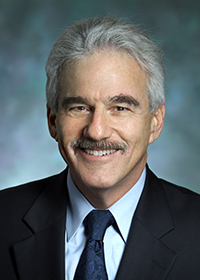
By Mark Smith, MD
Twitter: @AirStripmHealth
Clinicians want two things from data. On an individual patient level, they need to be able to see the data whenever and wherever they want – in a clean at-a-glance format and with essentially zero lag time. And at a cohort (population) level, they want the data presented as meaningful information in a way that enables conclusions, decisions, and actions about a group of patients.
These statements may seem like self-evident Data 101 to many of you, but in my decades of experience working clinically as an emergency physician and being responsible for operations of multiple emergency departments, it is clear that we have not delivered on this vision. In fact, the healthcare world lags other industries by 15-20 years in the availability, presentation, and use of information. Although our industry is catching up, there is still more effective use of information technology in banking, aviation, on-line retail, and a multitude of other industries. Even though many of the concepts of optimum presentation and use of data have been around for decades – the quest for electronic health records began in the 1980s – their breadth of execution and the realization of their value propositions have not been sufficient to become the norm. Healthcare has moved at a glacial speed of change, at least until recently.
In developing technology to improve healthcare, there are two things to consider: how it improves patient care and how it affects clinicians. One of our drivers at the MedStar Institute for Innovation, is the creation of information platforms that provide care teams with near-instantaneous access to all relevant data, regardless of source, that is relevant to a clinical care decision. Years ago (circa 1996), my colleague Craig Feied, MD and I developed Azyxxi, a clinical information system that was first used at the MedStar Washington Hospital Center emergency department. Its design was driven by our realization that clinicians spent 30-40 percent of their time just looking for information. If we could make any item of data concerning a patient available in less than 1/8 of a second (so its access would feel essentially instantaneous), we knew that the clinician experience would flow and that the time not spent in search or wait mode would be better spent using that data to make the appropriate care decisions.
By eliminating data silos, creating simple and sleek user interfaces, providing data in context, and using human factors design principles to bring the important data to the forefront of a clinician’s ken, we can improve care. We can make better clinical decisions faster, we can “miss” less important information, and we can make care safer by reducing the number of actions or inactions which can have serious consequences on a patient’s well being. In healthcare, it’s not good enough to get it right 99 percent of the time, i.e. miss things at a one percent rate. For every patient in whom a preventable adverse event occurs, that error in care happens 100 percent for that individual, who must live with the consequences forever.
To design and build information tools that support optimum care, it is important to consider what physicians and broader care teams really need – and only what they need. More is not necessarily better. Signal is easily overwhelmed by noise. The patient is ill-served by a drive for completeness if an item of data that represents critical information is buried in a welter of unimportant information. Clinicians understand what they really need to know and when they need to know it. They know what it is they have to go hunting for and what would make sense to bring to the forefront.
And while many of us may think we have a clear understanding of what needs to be done, based on our own needs and analysis, working within a liquid network of other like-minded clinicians and outside vendors who know how to develop and deploy technology effectively will give us the best chance of success. Partnerships with vendors can enable us to build on their previously existing platforms and to share and spread transformative tools and best practices among healthcare facilities. In this way, we can work together to bring healthcare up to a “use of data” standard enjoyed by other industries.
As the African proverb says, “If you want to go fast, go alone. If you want to go far, go together.” Let’s go together.
About the Author: Mark S. Smith, MD, is director of the MedStar Institute for Innovation (MI2). In this role, Dr. Smith leads a system-wide initiative to foster and catalyze innovation at MedStar Health. In addition, Dr. Smith serves as professor and chairman of emergency medicine at the Georgetown University School of Medicine and is the former chair of MedStar Emergency Physicians. This article was originally published on Mobile Health Matters and is republished here with permission.
